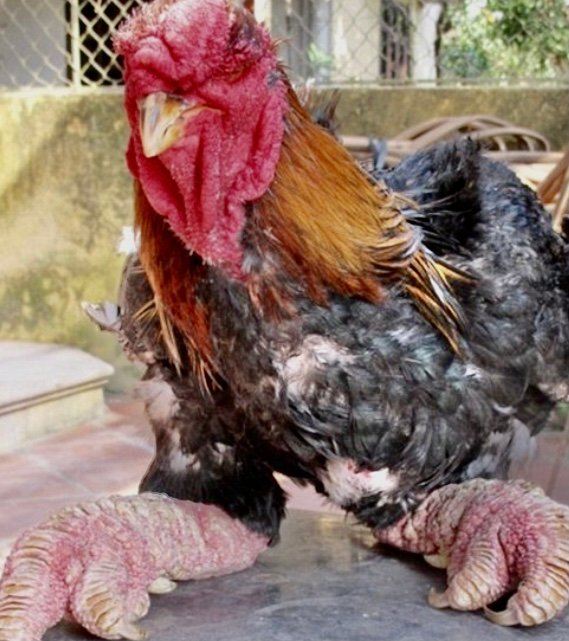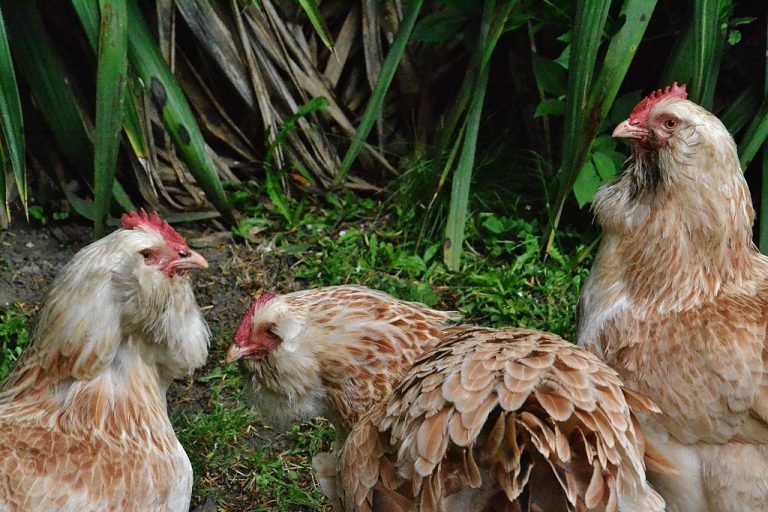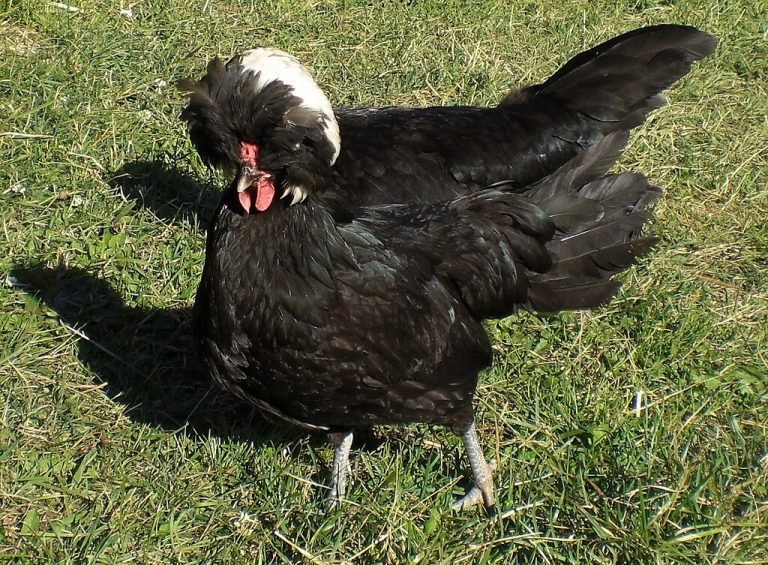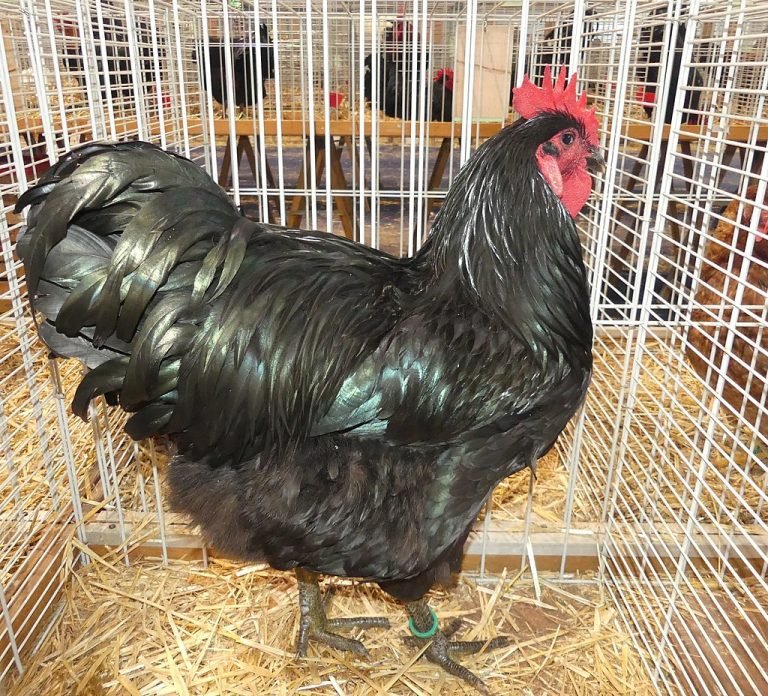The Brahma Chicken breed is known for its large size and striking appearance, with feathered legs. Originating from the United States, this breed is famous for its docile nature and ability to withstand harsh weather conditions.
History
The Brahma chicken breed, also known as the “Gentle Giants,” has a fascinating history that spans continents and dates back over 150 years. This majestic breed originated in the United States in the mid-1800s but has roots in both China and India.
Let’s delve into the intriguing history of the Brahma chicken breed:
- Chinese Influence: The Brahma breed’s ancestry can be traced back to the Chinese breed called “Shanghai.” These Chinese chickens were large and had feathered legs, traits that became distinctive features of the Brahma breed.
- Development in America: The Brahma chicken breed as we know it today was developed in the United States. It was created by crossing imported Chinese Shanghai birds with Chittagong chickens from India. These initial crossbreedings resulted in a large, hardy, and feather-legged chicken.
- Introduction to the UK: The Brahma breed gained popularity and recognition in the UK during the mid-1800s. It was first exhibited there in 1852, where it quickly captivated poultry enthusiasts. Its unique appearance and impressive size made it a widely sought-after breed.
- Queen Victoria’s Influence: The Brahma chicken breed received a significant boost in popularity when Queen Victoria of England took an interest in them. She received a gift of Brahmas while attending the Paris Exhibition in 1855. Queen Victoria’s support solidified the breed’s reputation and raised its status among poultry enthusiasts.
- Spread across the Globe: From the UK, the Brahma breed spread across Europe and eventually reached many other parts of the world. Its large size, cold hardiness, peaceful temperament, and striking appearance made it a desirable breed for both exhibition purposes and egg production.
- Modern-Day Brahma Breed: Today, the Brahma breed is still loved and admired for its unique characteristics. It comes in three recognized varieties: light, dark, and buff. These varieties differ in coloration but share the same large and robust physique that makes them stand out among other chicken breeds.
The history of the Brahma chicken breed is a testament to its enduring popularity and distinctive attributes. With its fascinating journey from China to the United States and eventual global recognition, the Brahma breed continues to captivate chicken enthusiasts worldwide.
Whether you are drawn to its striking appearance or the numerous practical benefits it offers, the Brahma breed remains a true gem in the world of poultry.

General Characteristics
The Brahma chicken breed, with its distinctive appearance and imposing size, is one of the most fascinating breeds in the poultry world. Hailing from the United States, the Brahma breed has captured the attention of chicken enthusiasts around the globe.
In this blog post, we will delve into the general characteristics of the Brahma chicken breed and uncover what makes it so remarkable.
Appearance
- The Brahma chicken breed is known for its impressive size, with roosters weighing up to 12 pounds and hens weighing up to 10 pounds.
- These chickens have a massive frame, standing tall and upright, making them an eye-catching addition to any flock.
- Their feathering is luscious and abundant, with well-defined patterns and beautiful colors that range from light to dark.
- The breed’s most distinctive feature is its feathered legs and feet, giving them a regal and majestic appearance.
Egg Production
- Brahma chickens may not be the most prolific egg layers, but they make up for it in other ways.
- Hens typically lay around 150-200 large brown eggs per year, which is considered moderate compared to other breeds.
- While not as consistent in their egg production as some smaller breeds, Brahma chickens compensate with their impressive egg size.
- Their eggs are known for their rich golden yolks and excellent taste, making them a sought-after delicacy by many egg enthusiasts.
Cold Hardiness
- The Brahma breed is renowned for its remarkable cold hardiness, able to withstand harsh winter climates without issue.
- Their dense feathers and feathered feet provide excellent insulation, keeping them warm even in freezing temperatures.
- This makes them an excellent choice for chicken keepers in colder regions who want a breed that can weather the winter months.
- Their adaptability to different climates is a testament to their resilience and longevity.
The Brahma chicken breed’s sheer size, striking appearance, calm temperament, and cold hardiness make it a popular choice among poultry enthusiasts. Their feathering, demeanor, and ability to produce delicious eggs combine to create a breed that stands out in the chicken world.
Whether you’re looking to add a regal and majestic bird to your flock or simply want to enjoy the benefits of their egg-laying capabilities, the Brahma chicken breed is worth considering.
Temperament
The Brahma chicken breed is well-known for its calm and friendly temperament. These chickens have a docile nature, making them ideal for backyard flocks and for those seeking a peaceful and enjoyable chicken-keeping experience. Here are some key aspects of the Brahma chicken’s temperament:
- Gentle: Brahma chickens are gentle and tolerant, making them suitable for families with children. They are not aggressive and generally get along well with other chickens and animals on the farm.
- Curious: These chickens are naturally curious and enjoy investigating their surroundings. They will often happily explore the yard, pecking at the ground and foraging for food.
- Sociable: Brahma chickens are social creatures and enjoy being part of a flock. They thrive in the company of other chickens and can become stressed or lonely if kept alone.
- Easygoing: Known for their easygoing nature, Brahma chickens are less prone to stress and are more adaptable to different environments and weather conditions. This makes them an excellent choice for novice chicken keepers.
- Tameable: With regular handling and gentle interaction, Brahma chickens can become quite tame and friendly towards their owners. They can be trained to eat from your hand and may even enjoy being petted.
Overall, the Brahma chicken breed’s temperament is one of its most appealing qualities. Their calm and friendly nature makes them a delight to have in the backyard, and they can provide a rewarding and enjoyable experience for poultry enthusiasts of all levels.
Comb Types
Brahma chickens are known for their unique comb types, which include the single comb, rose comb, and pea comb. These different types add to the breed’s distinctive appearance and make them a popular choice among poultry enthusiasts.
The Brahma chicken breed is a fascinating and unique breed known for its distinct features and characteristics. One key aspect of the Brahma chicken breed that sets it apart from other breeds is its comb type. Let’s explore the different comb types found in the Brahma breed and understand their significance.
The Pea Comb
- The pea comb is the most common comb type found in Brahma chickens.
- It is characterized by three distinct ridges with a central groove.
- This comb type is smaller in size and has a compact appearance.
- The pea comb is well-suited for cold climates as it is less prone to frostbite.
- It also helps protect the chicken’s head from harsh weather conditions.
The Single Comb
- The single comb is another comb type found in Brahma chickens, albeit less commonly.
- It is a long, flat comb with a single ridge and a smooth surface.
- The single comb is more susceptible to frostbite in colder regions.
- However, it is an advantage in warmer climates as it allows better heat dissipation.
- Some breeders prefer single comb Brahma chickens for their sleek and elegant appearance.
The Cushion Comb
- The cushion comb is a rare comb type found in a few Brahma chickens.
- It is characterized by a small, round comb with a cushion-like appearance.
- The cushion comb is considered a deviation from the standard comb types.
- While it may not have any specific functional advantages, some breeders admire its uniqueness.
The Walnut Comb
- The walnut comb is a hybrid comb type that shares features of both the pea and cushion combs.
- It has multiple small knobs or protuberances resembling a walnut, hence the name.
- The walnut comb is relatively rare and not commonly found in Brahma chickens.
- Breeders appreciate the walnut comb for its distinctive and aesthetically pleasing appearance.
The Brahma chicken breed exhibits various comb types, each with its own unique characteristics and advantages. Whether it’s the practicality of the pea comb or the elegance of the single comb, these comb types contribute to the overall appeal and allure of the Brahma breed.
Conclusion
To conclude, the Brahma chicken breed is a fascinating and unique addition to any poultry farm or backyard flock. Its large size, majestic appearance, and gentle personality make it a popular choice among chicken enthusiasts. The breed’s rich history and cultural significance add to its charm, making it a true symbol of heritage and tradition.
Whether you are an experienced chicken keeper or a beginner, the Brahma breed offers many benefits. From its exceptional egg-laying capabilities to its meat quality and showmanship potential, the Brahma chicken breed is a versatile and valuable asset. By understanding its characteristics and providing the necessary care, anyone can enjoy the rewards of raising these magnificent birds.
So, consider adding the Brahma chicken breed to your flock and experience the joy and beauty they bring to your poultry journey. Happy chicken keeping!





